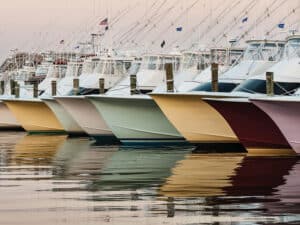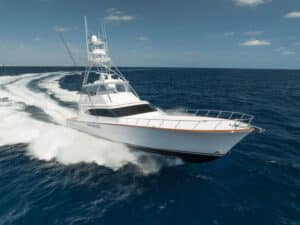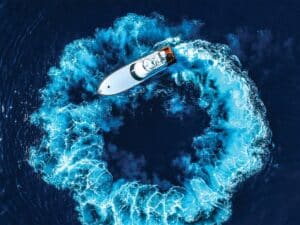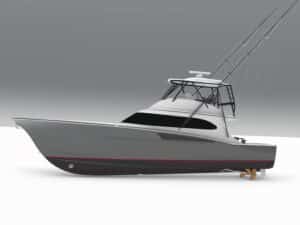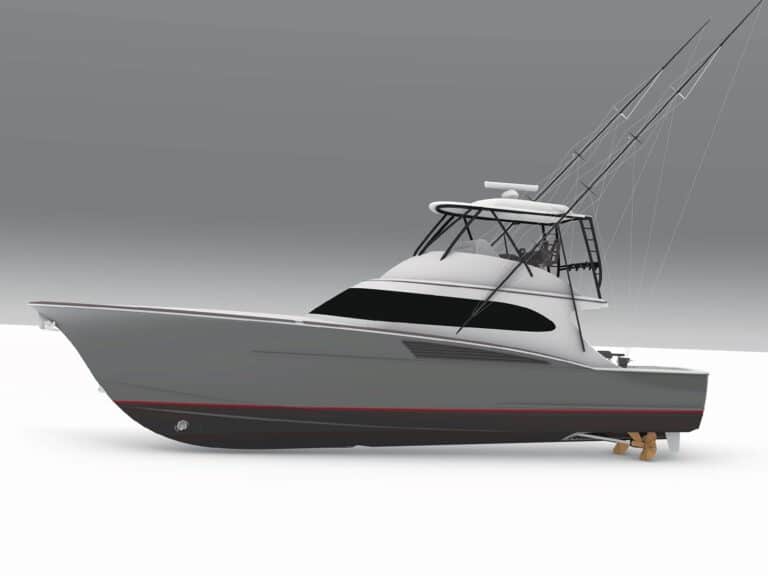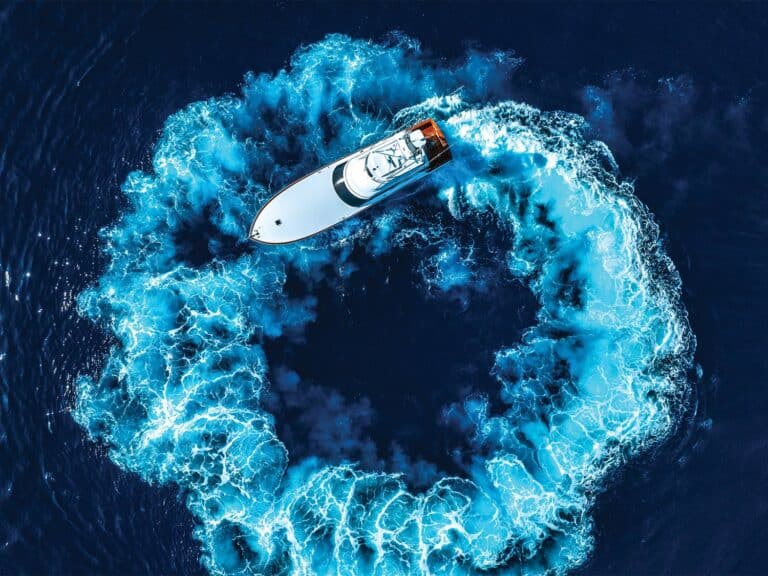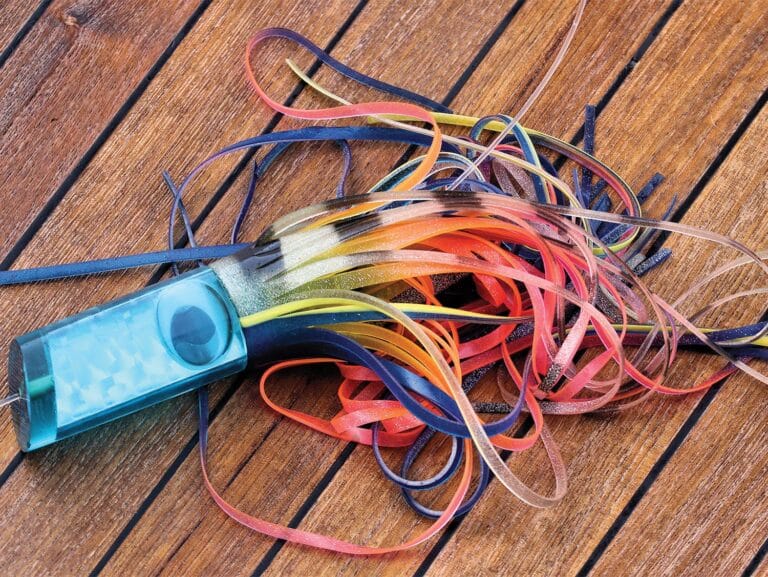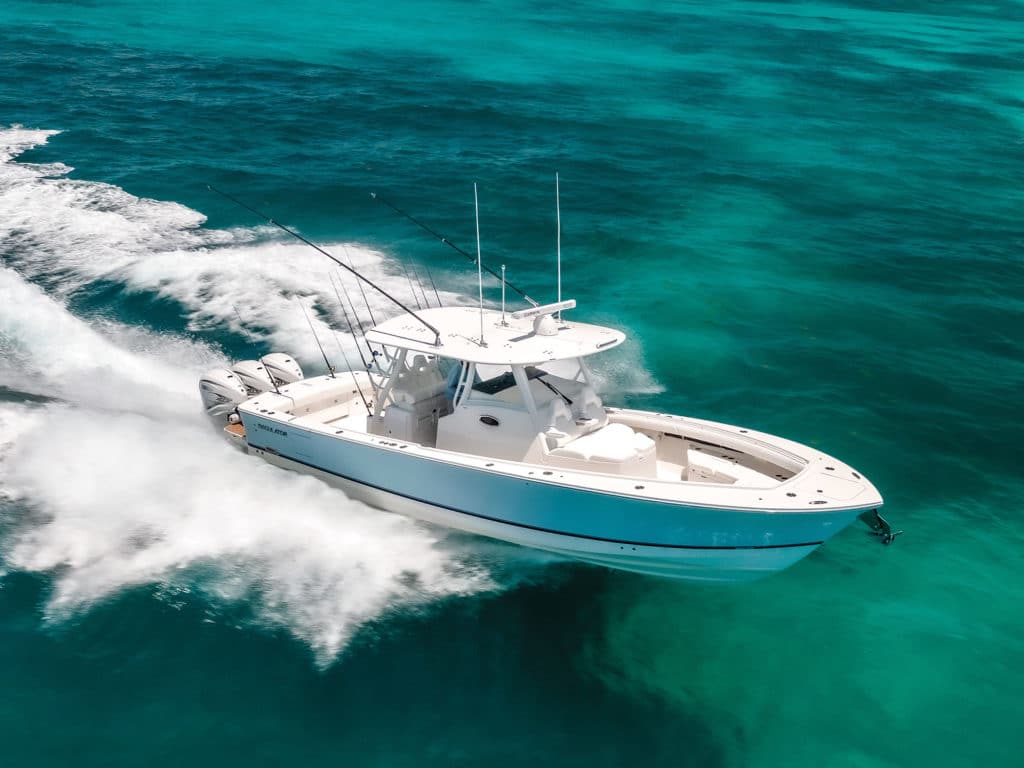
The center-console is unbeatable when it comes to effective big-water fishing. The basic concept emerged decades ago, providing 360 degrees of access to the rail, making the timeless design a natural for fishing. Today’s models are more advanced in construction and utility, representing the pinnacle of refinement and engineering.
The effectiveness of today’s offshore center-consoles, ranging from about 22 feet to more than 60 feet in length, is reflected in their skyrocketing popularity. Sales of these fishing machines have boomed, and waiting lists have grown to a year or more among the most popular brands. But the wait time allows careful consideration of options, and often customization, to get your boat powered and equipped the way you want it.
There are so many cool features integrated into today’s offshore center-console fishing boats that we couldn’t possibly cover them all here. But let’s take a look at just few of the elements that have vaulted these boats to the top of the saltwater food chain.
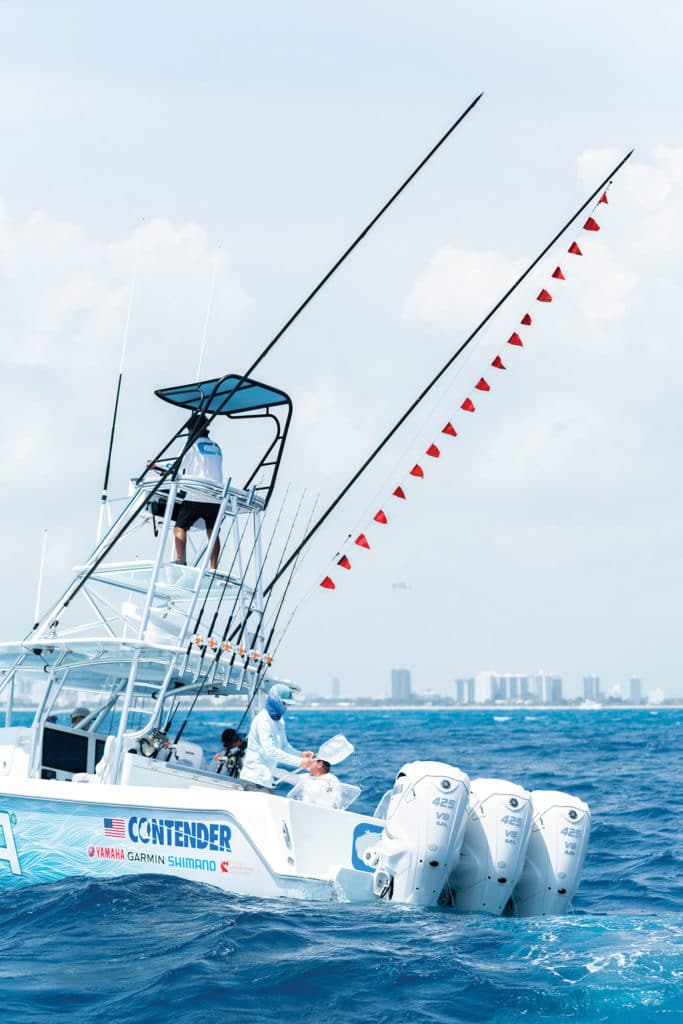
Hulls
Today’s offshore center-console fishing boats ride atop one of three hull types: conventional deep-V monohulls; stepped monohulls; and multihulls, often called cats, short for catamarans. Some multihulls can also have steps. How do you decide which hull type is best for you? First of all, each is superb in its own right, providing able and seaworthy platforms for chasing pelagic species such as mahi, marlin, swordfish, tuna, and wahoo, as well bottomfishing for grouper, snapper, and more. Here’s what you can expect from each type of offshore hull.
Deep-V monohulls with transom deadrise angles of anywhere from 20 to 25 degrees represent the most traditional design, adhered to by highly respected brands such as Grady-White, Regulator Marine Scout and Yellowfin A sharp entry, crisp keel and careful placement of chines deliver a running surface in a planing hull that knifes through rough seas to produce a smooth ride and stability when running or trolling.
A step-hull is a modification of a deep-V, with cross-longitudinal steps, or notches, molded into the hull. These steps introduce a thin layer of aerated water under the hull to reduce friction, and increase lift, speed and fuel efficiency on plane. There are some caveats. For one, the aerated water can interfere with sonar signals, so transducers need to be installed in front of the steps. Second, if you trailer your boat, make sure the bunks are properly designed to support the step-hull.
Catamaran hulls offer two sponsons, each of which is thinner than a monohull. Often designed to operate best as semidisplacement hulls, they knife through the water—unless enough horsepower is applied to get them planing on the surface—more easily than a single, wider hull.
Tip: Multihull center-consoles offer a smooth ride and increase beam for greater fishing room. The wide footprint helps increase stability at rest or when trolling, an ideal choice for fishing with a large crew.
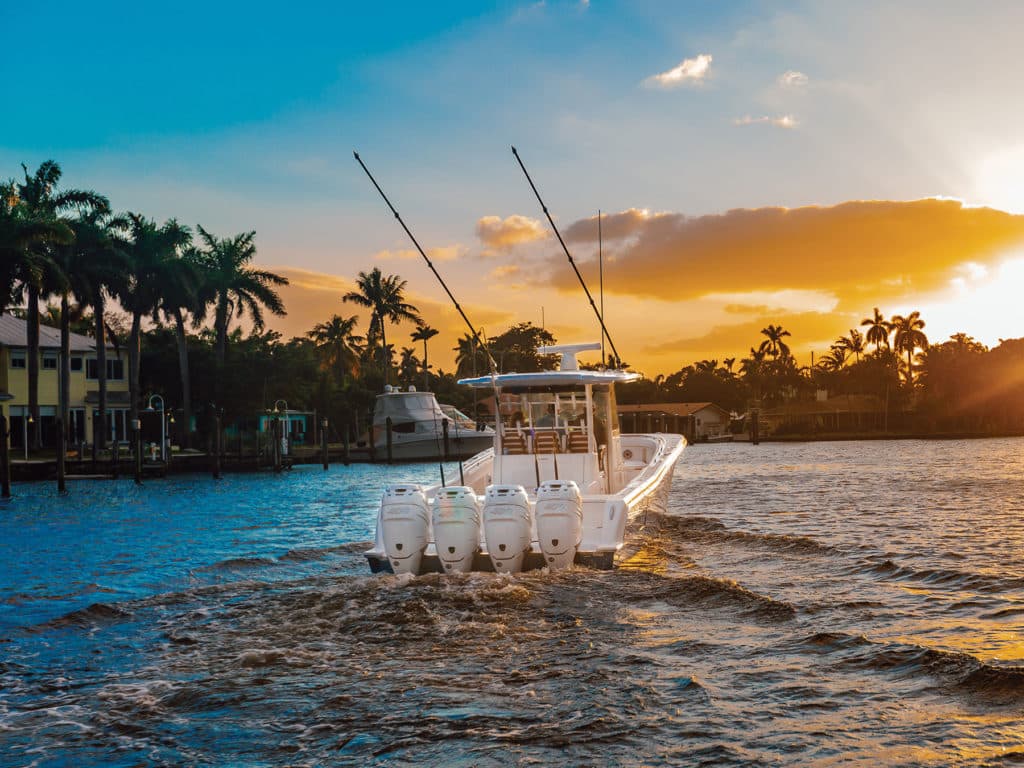
Horsepower
There was a time when triple outboards raised admiring looks. But center-consoles keep growing in length and beam, and with that comes the frequent need for quadruple and quintuple
outboards. Triples hardly raise eyebrows today. The goals of multiple outboards is to boost horsepower and speed, and offer redundant power for long trips offshore. Don’t expect every added engine to bring an equal addition of speed. As motors are added, so are load and drag, and beyond a point, the added motors have diminishing returns.
To improve efficiency for larger boats Mercury Marine and Yamaha Marine are building bigger motors. For instance, Yamaha’s 425 hp XTO V-8 outboard offers outstanding performance in pairs when pitted against triple 300s. Mercury’s 600 hp Verado V-12 is the most powerful outboard to date, replacing four 300s with two Verado 600s. The result is less drag, greater fuel economy and range, and more-exciting top speeds.
Tip: When ordering a boat, don’t skimp on horsepower, thinking you’ll get better fuel economy with less power. In fact, the opposite might occur because less horsepower working harder can burn more fuel.
Decks
Decks on today’s center-console offshore fishing machines have been engineered for optimal angling. The best ones are level from stern to the bow area, eliminating tripping hazards between the two. This enables anglers to sprint from the transom livewell to the bow to cast a bait to feeding fish or to work a hooked fish along the rail without tripping on a nasty midship step.
Nonskid decks help ensure traction and safety in wet conditions and sloppy seas. Nonskid treatments include a molded-in diamond pattern or a gritlike texture to channel away water and ensure grip. Teak soles are effective nonskid surfaces. Closed-foam EVA nonskid from brands such as SeaDek become more popular as an option every year. It’s available in a wide variety of colors and designs, and offers a soft cushion layer underfoot.
Tip: When ordering your new boat, ask about options for decking such as an available teak sole or EVA nonskid. It’s also always easier to have these options installed during the build and fold it into the financing than to do so after the sale.
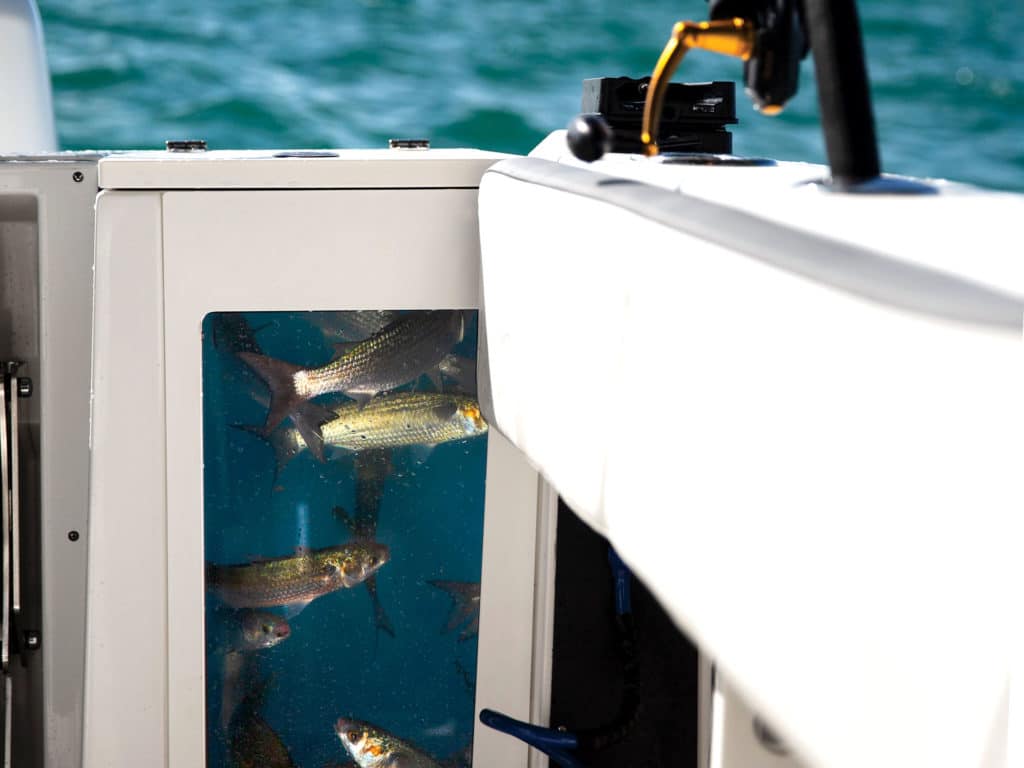
Livewells
As live-bait fishing has grown increasingly popular, livewells have become increasingly important aboard offshore center-console fishing machines. Transom bulkheads and leaning-post modules (prime positions for livewells) are often designed with the goal of maximizing live-bait capacity. Some boats boast two or more wells in the transom bulkhead and another one in the leaning post, with capacities as large as 50 gallons each. Still other boats have a plumbed well under the cockpit sole, known as a deck well, to carry as much live bait as possible.
Oval or round livewell interiors have proved to be gentle on liveys, and light-blue interior walls are believed to help comfort bait. Lighting helps to see the bait at night. Many offshore center-consoles feature pump boxes in the bilge area that bleed off air picked up by the livewell pump. The result is the delivery of pure, nonaerated water that enhances baits’ comfort and survival.
Tip: The best livewells can be pressurized once the top lid is sealed. When completely full of water, this eliminates sloshing, which can injure bait. Ask about this when you order your new boat.
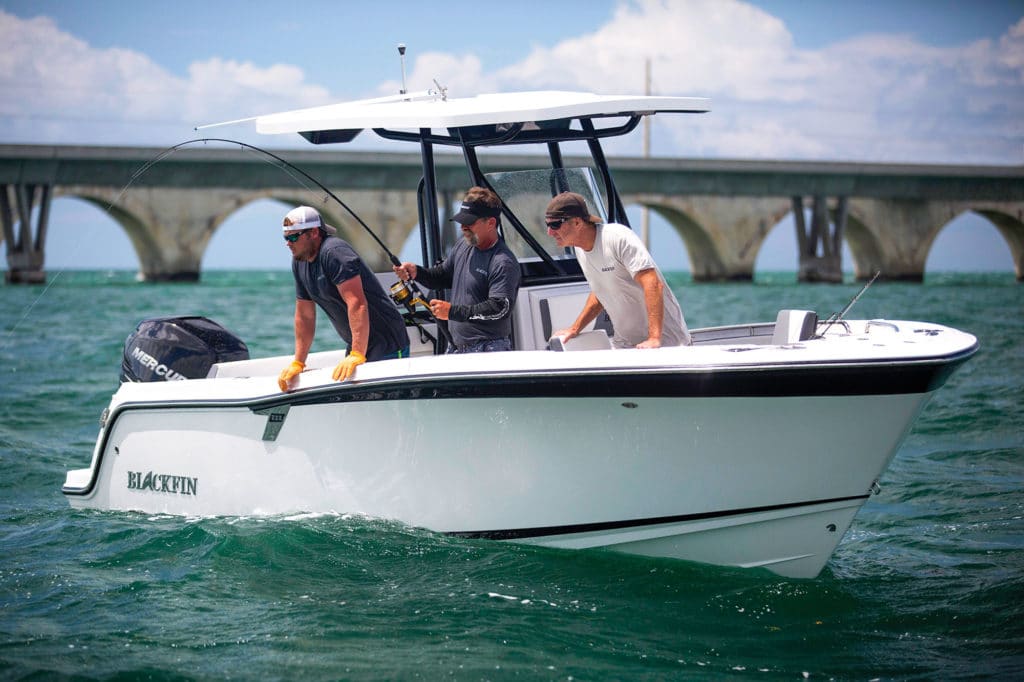
Rod Stowage
There is an axiom among veteran offshore anglers: You can never have too much rod stowage. Boatbuilders have devised ways to incorporate abundant rod stowage on board, keeping a wide array of tackle convenient for access when conditions call for changing tactics.
Gunwale rod holders are flush-mounted rod holders used for trolling, drifting, kite-fishing and more. Many new boats have rod holders around the entire gunwale, including shotgun holders on the transom. Work with your dealer or boatbuilder to ensure that you have plenty of these rod -holders where you want them and at the best angles on your new boat.
Undergunwale rod racks stow rods horizontally but are usually limited to three or four rods on each side. New boats with side doors also limit undergunwale rod racks.
Vertical rod holders on the sides of the center console and/or the coffin box are a good option, and rod stowage below the console is another option.
Add rocket-launcher racks to your T-top and leaning post. The best arrangement of these racks of rod holders on a T-top enables you and your crew to reach them without climbing on something.
Taking your time and working with your boatbuilder or dealer will ensure that your center-console is equipped to meet your angling style and needs.
Tip: When ordering your new boat, inquire about lockable rod stowage to securely stow some outfits inside the center console or in special onboard compartments.

Center of Attention
Today’s offshore center-console fishing machines come in a wide range of sizes, styles and hull designs, but the common denominator among them all is a central helm console. This serves two key functions. For one, it offers anglers unfettered access to the entire perimeter around the boat, including easy-to-navigate walkways aside the helm console. This allows crew to quickly traverse fore and aft to cast to fish or follow a hooked one. Second, a central helm area gives the skipper an unimpeded 360-degree line of sight to keep tabs on the action no matter where it occurs, and to easily move in and out of the helm area when needed.
Tanks for the Range
The nature of bluewater fishing often calls for the ability to make long runs to offshore fishing grounds. That, in turn, calls for the fuel capacity to make it out there, perhaps troll all day, and when done fishing, safely return to port. So, pay close attention to fuel capacity of the new boat you’re considering to ensure that it will serve your needs. Some models offer an option for additional fuel capacity, which you might also consider.
Editor Says: While in the past most center-console boats came with clear acrylic windshields or clear vinyl enclosures to protect the helm area from wind blast and spray, an increasing number of today’s center-console models feature three-sided, full-height tempered-glass windshields that are integrated into the T-top frame. Not only are these more durable, but they also do away with the distortion inherent to acrylic and vinyl. -Jim Hendricks, Staff Editor, Boating and Fishing Group
